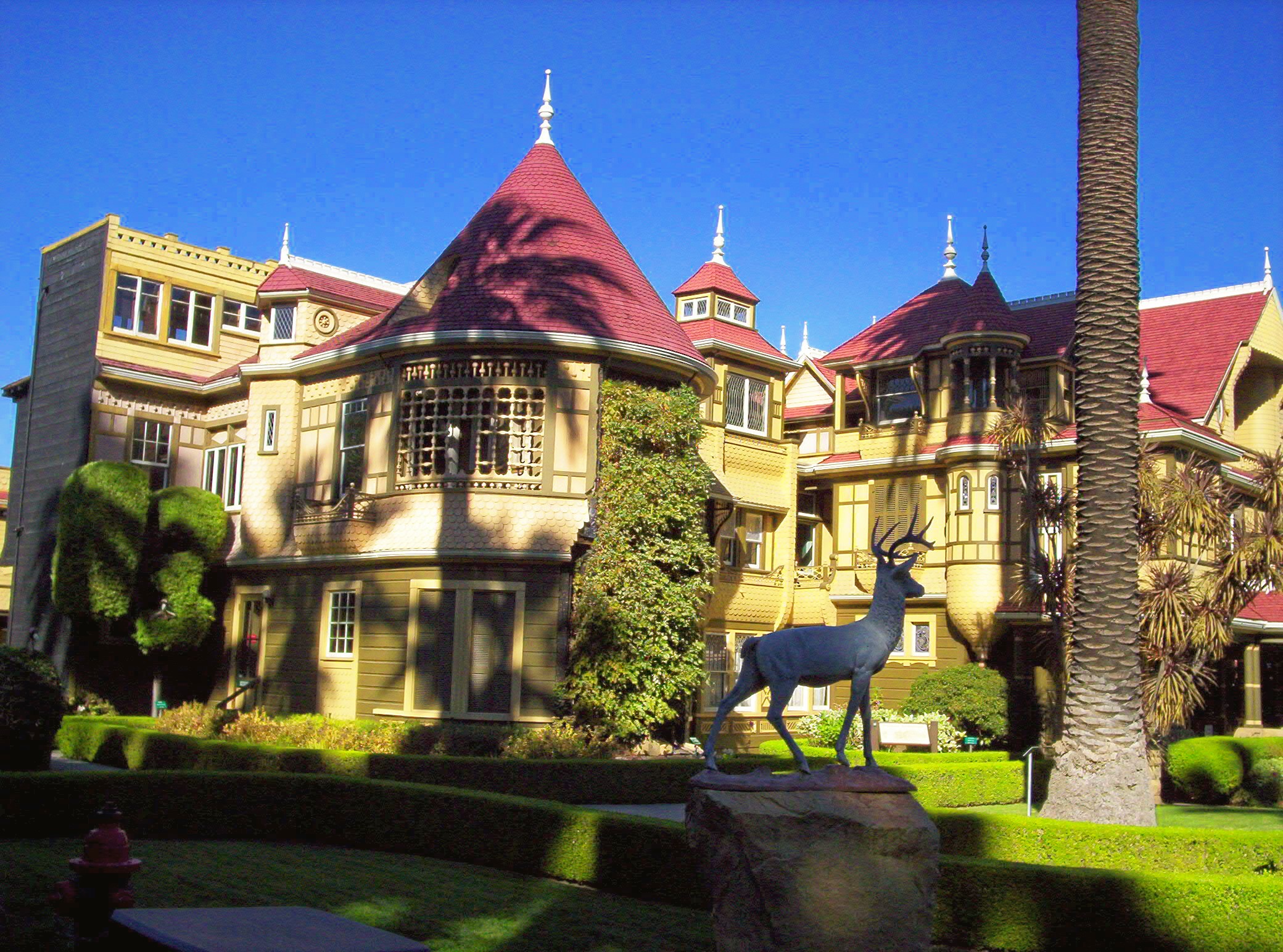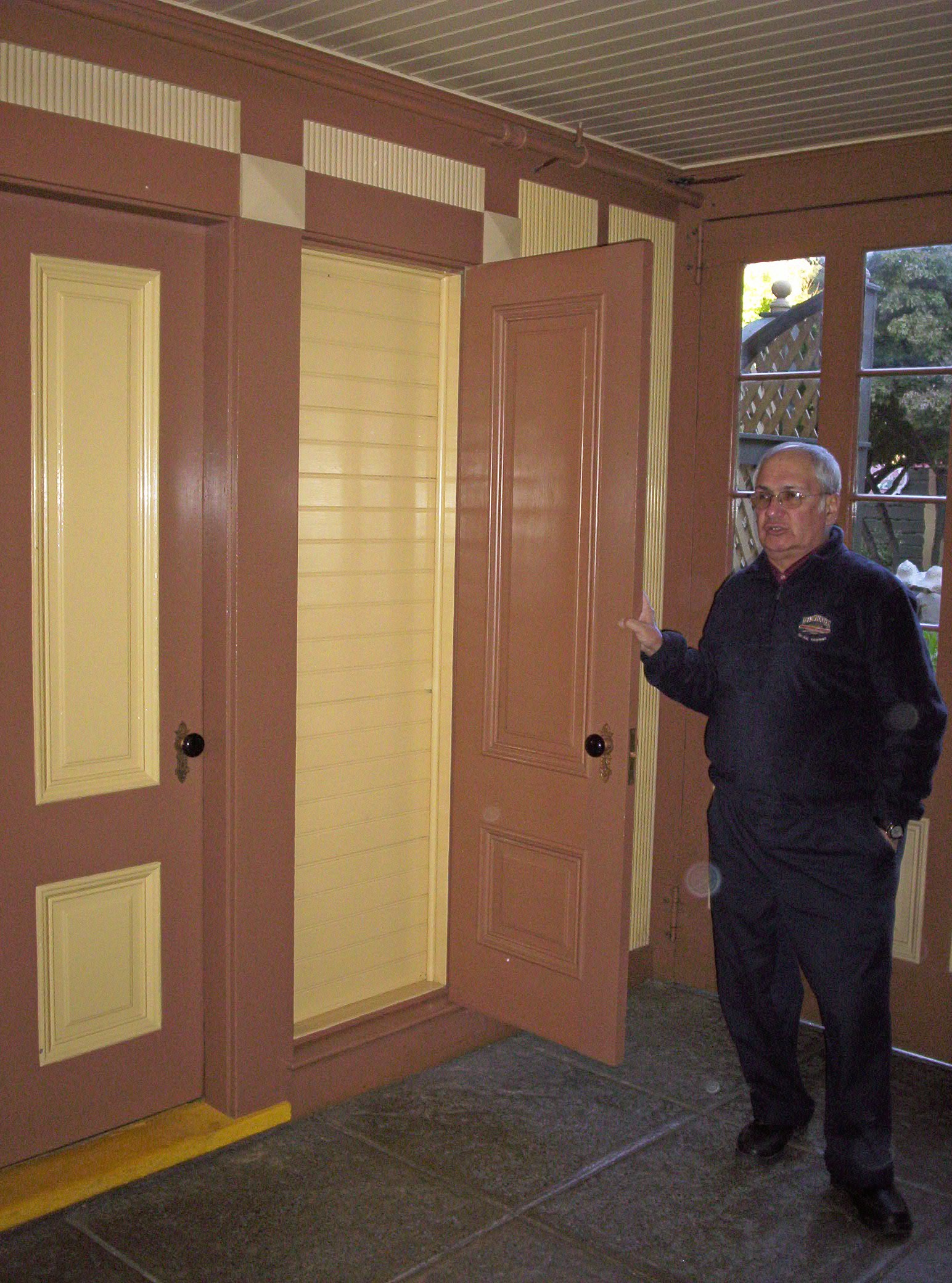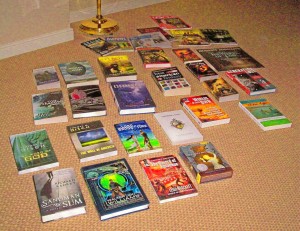Welcome to our second author interview! I’ve recently been reading some stories that combine brilliant invention with skillful pacing, deftly-drawn characters, and the most beautifully-evoked worlds of wonder I’ve encountered in some time. I remember when I was eight or nine years old and saw The Golden Voyage of Sinbad at a matinee one summer day — and loved it so much I saw it again within a week — and read the novelization — and then went on to seek out and read Arabian Nights, which was where, my parents explained, Sinbad came from. These stories I’ve been reading this week have taken me back to those times. The visceral wonder we feel when immersed in stories tends to diminish as we go through life. But these tales have allowed me to be nine years old again — what higher praise can there be for a fantasy story? But don’t let my talk of childhood fancy-flights mislead you: there are depths to these stories as well: thrills to satisfy a reader’s inner child, richness to satisfy a reader’s inner adult — there’s plenty there for both.
The author is John R. Fultz. He writes fiction for Weird Tales and Black Gate, and has written for comic books such as Zombie Tales and Cthulhu Tales; and his graphic novel of epic fantasy, Primordia, will be released in hardcover sometime during the next several months. A much-shortened form of his bibliography is as follows:
“The Persecution of Artifice the Quill” — Weird Tales #340
“When the Glimmer Faire Came to the City of the Lonely Eye” — forthcoming in Black Gate
“Return of the Quill” — Black Gate #13
“The Vintages of Dream” — forthcoming in Black Gate
“Oblivion Is the Sweetest Wine” — Black Gate #12
Unquestionably, this is a long interview. I looked carefully for things I might cut, but in the end, I”m offering the whole thing because it’s all worthwhile. If it’s too much to read in one sitting, by all means, come back to it — make a week-long excursion of it — but do read the whole thing sooner or later: you’ll be glad you did.
Instead of tagging each question with the traditional “FSD,” I’m leaving them numbered so that you can easily find your place again if you take a break. Without further ado, then, I give you John R. Fultz, sorcerer of the pen. . . .
1. Readers of this blog always seem eager for lists of books they should be reading. I know “fantasy” is a broad and diverse field, but are there a few books/authors that you think anyone interested in fantasy absolutely should read?
Man, I love giving recommendations for fantasy readers. As you can imagine, I have my own list of All-Time Greats. Everybody has read Tolkien, so I’ll skip that (but SILMARILLION is my favorite). I think any person who loves fantasy should definitely seek out and read:
– Tanith Lee’s TALES OF THE FLAT EARTH series (One of the most beautiful and lyrical series of books ever written. Lee is the Queen of Fantasy and her books are sheer fantasy perfection.) I also recommend her VENUS series, and her latest epic THE LIONWOLF trilogy.
– Lord Dunsany’s THE KING OF ELFLAND’S DAUGHTER, and any of his short stories (Dunsany really was a wizard with a quill pen…his writing is breathtakingly gorgeous.)
– Clark Ashton Smith’s ZOTHIQUE, HYPERBOREA, and POSIEDONIS tales (CAS was the master of Dark Fantasy before that term was even invented—such a combination of wild imagination, dark/weird sensibilities, and sheer poetic brilliance of style.)
– Darrell Schweitzer’s MASK OF THE SORCERER and its sequel THE BOOK OF SEKENRE (Darrell is one of fantasy’s best kept secrets…true geniuses are often overlooked and this is the case with Schweitzer…his writing IS sorcery…he weaves a spell about his readers that you’ll never want to break.) I also recommend any of his collections such as WE ARE ALL LEGENDS, NIGHTSCAPES, and REFUGEES FROM AN IMAGINARY COUNTRY, etc.
– A. A. Attanasio’s THE DRAGON AND THE UNICORN, and its many sequels (A retelling of the Merlin/Arthur mythos that is unlike anything ever written about these characters. A.A.A. has a way of opening the universe and making you understand how magic really DOES work, all while mesmerizing you with the mythic power of his narrative.)
– Brian McNaughton’s THRONE OF BONES (McNaughton was a genius of weird fiction—this book is to ghouls what DRACULA was to vampires. The strange, ghoul-haunted word of Seelura he created will linger in your mind long after you finish this one.)
– R. Scott Bakker’s PRINCE OF NOTHING trilogy…including THE DARKNESS THAT COMES BEFORE, THE WARRIOR-PROPHET, and THE THOUSAND-FOLD THOUGHT. (Bakker has reinvented the Epic Fantasy and done it in a way that isn’t a thinly veiled version of Tolkien’s work. He is a philosopher by trade, and the metaphysical aspects of his fiction are woven with a blood-and-guts earthiness that creates a fantasy epic somewhere between David Carradine’s KUNG FU and Frank Herbert’s DUNE, as filtered through ARABIAN NIGHTS. These books are exactly what you’re looking for if you’re tired of business-as-usual fantasy series.)
– Robert Silverberg’s NIGHTWINGS is one of the greatest fantasies ever written as well, even though you might call it science-fantasy. Full of brilliant imagination, wild spectacle, and transformational wisdom, it is the kind of book you never get tired of re-reading.
– I recommend any of Thomas Ligotti’s books (the greatest living horror writer in the world), and most of William Gibson’s books (Yeah, he’s sci-fi, but he’s just such a damn good writer it doesn’t matter.)
– A year or so ago, I finally gave in and discovered the genius of George R.R. Martin’s A SONG OF ICE AND FIRE series. I couldn’t believe it was as good as all the hype! But it is. He is a master of character, and he makes you fall in love when he wants, makes you hate when he wants, and always makes you want to see what happens next with his cast of all-too-human heroes and villains. Very realistic take on medieval fantasy that uses a less-is-more approach with magic.
– Jeff VanderMeer’s AMBERGRIS series is one of the best things to come along in the last five years or so. CITY OF SAINTS AND MADMEN, SHRIEK: AND AFTERWORD, and the just-released FINCH offer a fresh new take on the weird-fantasy genre that straddles the line between fantasy and horror (and a few other genres as well). Brilliant stuff.
I’ll stop here or else I’ll never finish… 🙂
2. Your work that I’ve read is fantasy in the grand tradition of such writers as Clark Ashton Smith, the pre-Tolkien mode that calls to mind the exotic flavor of Arabian Nights. What is it about such settings (deserts and opulent, decadent walled cities — and the moldering crypts beneath them) that appeals to you?
Good question, Fred! There are a few influences that led me back to that pre-Tolkien mode of fantasy, as you call it. One was of course Robert E. Howard’s CONAN and KULL tales (I prefer the KULL tales, but love them both.) I grew up reading this stuff in both novel and comic book formats. Another was Edgar Rice Burroughs’ MARTIAN TALES series…the John Carter of Mars books. I grew up in the 1970s, which was a Golden Age for fantasy, and particularly for “sword-and-sorcery” fiction. Later I discovered Clark Ashton Smith’s tales of lost kingdoms such as Zothique, Hyperborea, and Posiedonis, and I couldn’t get enough of his writing.
There’s just something so intriguing about the “lost world” concept. Think about the ages of pre-history that are now lost to us. How many empires, kingdoms, and nations existed in the dim eons of earth that we will NEVER know about? I also buy into the concept of inherited racial memories, to a point, as well as the concept of Reincarnation. I believe I was an inhabitant of Atlantis, possibly during the time it sank beneath the waves. I’ve always had dreams and lurking fears of colossal tidal waves, and I’m very mistrustful of the ocean and its wrath. I also believe I was at one time (or many times) a citizen of the Roman Empire. I’m simply fascinated by the Ancient World…the parts of it we know about, and even moreso the parts we will never know about.
When I discovered Tanith Lee’s TALES FROM THE FLAT EARTH, it opened an amazing doorway for my imagination. She set her tales in a “time when the earth was still flat.” The laws of the universe were very different…the gods were ethereal beings who cared nothing for man, and the demons were more like beautiful demigods who went around seducing mortals and causing strife. Her characters in this series are so mythic and primordial—they tap into the archetypal consciousness. I think all really good fantasy taps that ancient wisdom that lies inside our consciousness, often buried so deep it is never consciously acknowledged.
Reading Tanith Lee (which began with a dog-eared copy of DEATH’S MASTER I stumbled across in a used bookstore in Lexington, Kentucky) made me want to focus on a broader and more ancient scope than your typical “medieval England” type of story. Also, I came to the realization that nobody can ever be Tolkien, so why should anyone try? I’d rather go back into the murky haze of primordial existence and create my own kingdoms from ancient models and myths. And do something new with them, of course. Always try to do something new with them.
All fantasy writers create new worlds, so in the end you are drawing from various sources real and unreal. Why look at the whole of history and pre-history and stop at the medieval ages? Keep looking back and you’ll find way more bizarre epochs to explore and utilize as you craft your own fantasy milieu. Sometimes you can look forward, too…but that’s another question.
3. Have you ever set a story in the popular medieval British Isles-type milieu? If not, or not many, did you make a conscious decision to avoid that sort of setting?
As mentioned in the previous answer, I’m much more drawn to the Greco-Roman inspired settting, or the Ancient World type of environment. Not to say I won’t ever write something set on the British Isles, or my version of it. But I feel that has been done so much, and so well, that there’s really no need for me to do it. I’ll read Tolkien and Attanasio instead. 🙂
4. For me, stories almost always grow out of place — a cave, an overgrown garden, a huge vehicle of some sort, a rural community, a barn — and the story reveals itself from there. How does it work for you? Where does a story idea usually begin?
It varies from story to story. That’s the mystical, exciting part of writing—when the idea first blossoms in your mind…a little sprig taking root in the fertile soil of IdeaSpace. Sometimes I’m inspired by a piece of art, or a setting, or a stray line I’ve read somewhere. I’ll take inspiration wherever I can get it. But I can tell you when I have a story, and where I always look when I’m moving forward: Characters. For me, stories begin and end with Characters. Alan Moore said something that really struck a chord with me, so I’ll paraphrase his wisdom: When you drop well-defined characters into a well-defined setting and let them run like rats in a maze, doing whatever they would naturally do…you have a plot. Especially when you have very different characters with contrasting goals and interests.
I think a LOT about my setting…as most fantasy writers have to. But I think a lot about my characters as well. The characters are going to be my readers’ link to this fictional world, and so they become my link as well. I never worry about “What will happen next?” because I just ask my character. The rule I follow is: Characters always behave according to their inherent natures. Just like real people. You can usually predict what your friends or family members will do in any given situation—because you know them so well. That’s how you have to know your characters.
One of my joys in writing is when my characters come into conflict with each other. Maybe it’s because conflict is the very heart of all Drama. Or maybe it’s me working out subconscious/emotional conflicts that I can’t handle on a conscious level. Whatever…it doesn’t really matter, but all characters are extensions of the writer’s psyche. Put them in a box and let them play. But make sure it’s a fascinatingly designed box! So I always come back to character. Keep in mind that your setting in itself can be a character as well…some settings make demands on characters that they cannot ignore.
When I have the basic idea for a story—which can come from anywhere—it “floats” there until I come up with a character (or characters).Once I have them, the idea starts to really grow and blossom, and before you know it I have a story ready to be written.
5. You’re an amazingly productive writer. Can you tell us something about your process? How does writing fit in around your full-time day job? When and where do you get it done? Do you write first drafts by hand or on a keyboard? Do you seek any input before you send things out?
Well, I go through productive periods and non-productive like everyone else. One thing I like to tell people (including my students) is that “Not Writing is a very important part of Writing.” I mean, the first thing you have to do before you write something is THINK about it. Thinking isn’t actually writing…but then again it IS. I think, therefore I write. 🙂
I teach English for a living, and right now I’m teaching 8th grade level in the Bay Area. During the regular teaching year there is precious little time for writing. However, that doesn’t stop me from thinking! I try to keep my mind open for good ideas. They never spoil. Some writers carry ideas around for years before they turn them into stories or novels. The great thing about being a teacher, though, is that I get summers off to focus on my writing. Not to mention extended vacations over the winter holidays, and a Spring Break. There are assorted 3- and 4-day weekends during the year as well. These are the times when you’ll find me hitting the keyboard and getting my writing done.
Sometimes, though, I get inspired and nothing can stop me. For example, after attending this year’s WORLD FANTASY CONVENTION (my first ever), I came home so inspired that I’ve hammered out three new stories this month. While teaching! I’ve never done that before, so either I’m getting better or I’m just hella-inspired. Now, when the holidays hit I usually go back to Kentucky and visit relatives and friends—that’s a time when I won’t get any writing done either because it’s all about airports, highways, and the usual Yuletide celebrations. Which are great—it’s nice to have a couple weeks at the end of every year to “unplug” and just enjoy life for a little while. Again, those times can birth a bunch of new ideas, though, so I’m always ready.
Sometimes an idea will come to me and I’ll pull out my cell-phone, which has a recorder function, and speak the “nugget” of my idea right into my phone recorder. I’m like Dale Cooper on TWIN PEAKS speaking his thoughts to Diane. I might make two or three more “Messages to Self” before I put something on paper.
I think of ideas as “seeds”—let them grow in the mind until I just can’t stand it anymore. Then I’ve got to get it out of me. That’s when I sit down and hit the keyboard. Sometimes I’ll write longhand notes first—but whenever I can I prefer to just go right to the keyboard. I may write a page or several pages of notes—the Prewriting Process—before I actually write the first line of a story. I see the First Line as a gateway. Once I decide on what I think the “perfect” first line will be, I can “enter” the story-world completely. But I can’t start typing the story itself until I’ve figured out what the opening sentence will be in my head. A good opening sentence always leads you on to more good sentences.
Sometimes I finish the story in a single sitting. Those are great blasts of inspiration, but also the results of much mental planning beforehand. Once I know what the END is going to be, I can start the story. Sometimes I have only a general idea of the end, and other times I know EXACTLY what the ending will be. Sometimes I write out a bullet-list of events (i.e. Plot Points), and other times I keep it all in my head…a “general direction” rather than a plan, to use Bradbury’s terminology.
For longer stories, I’ll write them in shifts. But I usually can’t concentrate on much else until my current “project” is done. I always stop at natural breaks in the story…I’ll keep typing until I’m physically exhausted because I have to reach a good “resting place” before I can stop. Then I’ll come back the next day and finish it.
Writing novels is a whole different challenge from writing short stories. If you have a few weeks or months to build up momentum, you can really dive into it. That was the case with me last summer when I wrote SEVEN PRINCES. I had a general direction, but I wanted the characters to determine what actually happened from chapter to chapter. This was a new approach for me—with previous long-form works I always outlined them. This time, I wanted to let the characters and their world “breathe.” I knew where it was all heading, but not how I would get there. But the characters led the way, and often surprised me on the journey. Part of novel writing is being able to TRUST your writer’s instinct, your subconscious creator, if you will, to not lead you astray. My point of view is that if you follow the characters first and foremost, you’ll never write yourself into a corner. Realize that the characters are living these stories, you’re just chronicling.
I know that sounds like madness, but all writers are mad to a degree. But it’s a wonderful, joyous madness! Hahahahahahahah!
Someone said writing a short story is like walking a tightrope from beginning to end. Whereas writing a novel is like balancing SEVERAL things on tightropes and guiding them all toward the same ending. That’s a valid analogy. Writing short stories gives you a short-term thrill of completion, and you can really explore big, madcap ideas…just let your imagination soar. With a novel, you have to create a set of parameters, or story rules, and stick to them. That’s the thing about building momentum–the faster you go the harder it is to change course. So make sure you’re heading in the right direction. The way I do that is by following my characters, wherever they lead me.
There is always some kind of plan. Even if it’s all in mind (for shorter pieces), or a few lines of plot points, or a complete loose outline. Outlines inevitably change once you start to write, and often they become irrelevant when you’re in the middle of the story…but that’s okay because they give you what you need: a direction in which to travel.
With my SEVEN PRINCES novel, I had a general idea of where things were headed, but I consciously planned out only one chapter at a time. It was like strolling through fog, only able to see the next step or two ahead of me. My characters calling to me from somewhere in the mist, and me trusting they would lead me where we all needed to be. They did.
6. Descriptions, dialogue, action sequences, exposition of background. . . . Do you have a favorite part of a story to write? How about a least favorite?
My favorite part of a story to write is usually one of two things: Dialogue or Mystical/Magical/Surreal moments. In long-form works (longer stories or a novel) I relish exchanges of dialogue. It’s where my characters come to life and express themselves, and I really enjoy letting them interact and seeing where a scene takes me. It’s great when they surprise you, or when you write some dialogue and go back later and say “Damn, I don’t remember writing that at all!” The character was in charge; you were just transcribing.
My other favorite part of writing a story probably explains why I like fantastic fiction so much. I love writing pieces/scenes/sequences where “normal” reality is abandoned and the characters are caught in a mystical experience such as a dream-state, a spell of sorcery, an invasion of the “other,” or visions of surreal enlightenment. In short, I love to warp reality. I can’t really do that too well in my terrestrial life—but in my fiction I can twist the fabric of existence. My goal is always to create a unique experience for the reader. When I read Darrell Schweitzer’s sorcery sequences, they often take me to a trance-state, something like transcendental meditation. He literally boggles my mind! This is why I tell people that Darrell’s writing IS sorcery. A. A. Attanasio can do that as well, but he makes the most fantastical magic event seem as natural as a summer rain. Tanith Lee can transport me with the sheer beauty of her prose imagery, as can Clark Ashton Smith and Lord Dunsany. On the darker side, nobody warps readers’ consciousness like the Master, Thomas Ligotti. Once again, it’s like a spell has been cast, and you’re experiencing something that goes beyond simple eye-to-brain cognition. It’s like LSD without taking drugs. I love writing scenes that transcend mundane reality. I may not be as effective at it as those authors I mentioned, but they are my role models for doing this in my own fiction. Of course, there are many other authors who weave such spells on their readers, but these are just a few of my favorites. In short—I want to mess with your mind, dude! 🙂
7. Can you tell us about your revision process? How much editing do you do?
When I’m involved with crafting a story I’m constantly editing it. Write, edit, write, edit. I’ll “spot-edit” continuously, in between extended bouts of writing the actual prose. I “live with” the story for a day or a few days, and things “pop out” at me—things I have to fix, or things I forgot to put in, or things that need to be changed for consistency. Later, after the story is finished and I’ve taken some time away (usually less than 24 hours), I’ll go back and do a Complete Edit. That’s where I read the entire story onscreen and cut/add anything that needs to be fixed, smoothed out, or altered. I always try to cut myself mercilessly. Any word, phrase, or sentence is expendable in order to achieve the overall effect of The Story.
For me, the most difficult part of stories is perfecting the opening. I detest a boring or “blah”opening. I usually don’t read stories unless they grab me in the first paragraph. Who’s got the time for that anyway? I’ve got a lot of stuff to read! So I usually go over and over and over my opening paragraph (s), trying to make it absolutely perfect. The opening sequence of a story should be as precise and effective as a well-written poem. Every word counts. And since editors usually judge your stories by their openings, you have to show them you’ve “got it” right there in the first one to two paragraphs. I’m the same with songs on the radio—I can tell from the opening, or the first few bars, if I’m going to sit through that song. The “lead” of a story should be a grabber; that’s my philosophy. So I obsess over my opening paragraphs to excess. It seems to work!
8. Your roots are rural Midwestern, like mine, but most recently you’re a Californian. How has region affected your writing? How about geography?
Yeah, I grew up in Kentucky, lived in Chicago for a little while, and I’ve been a Californian since 1998. The first nine years out here was in Southern California—Orange County. This month marks my two-year anniversary of moving north to the Bay Area. California on the whole has been incredibly inspiring to me. It has definitely affected my writing in many ways. California has elements of all climates and peoples here. It has amazing history. Most of all it has an appreciation for the creative arts that the Midwestern environment seems to have in short supply. For example, if you say “Hey, I want to be a writer” in Kentucky, people will generally tell you to “Get a real job—you can’t make a living as a writer.” They’re more practical. The same goes for music, and other creative endeavors. On the other hand, if you tell someone in California you want to be a writer, they will automatically take you seriously and ask what you’re working on (or what you’ve written). Out here the business of entertainment and creativity is a real, economic power. People take writers and artists seriously the way they never did when I was a boy growing up in Kentucky. And there’s a reason for that: There simply aren’t that many opportunities for artists in that part of the country. If you want to be a writer, you really need to go to California or New York. Of course there are exceptions, but Cali is motion pictures and New York is publishing. And those two worlds are inseparably intertwined. The creative climate of California is what I enjoy most. People here are very impractical—in a good way!
9. Has there been a proudest moment in your writing career so far?
I think it was when I sold my first short story to WEIRD TALES, back in early 2004. The story was “The Persecution of Artifice the Quill,” and it ran in WT #340, which came out in ’05. I had literally been trying to sell stories to WT for fifteen years! Back in college, when I took creative writing courses, I used to read the Schweitzer/Scithers version of WEIRD TALES and I sent off stories to them. Darrell always wrote me the most insightful rejections. Every few years I’d try again, and I got better by little increments. It’s funny—when I was writing “The Persecution of Artifice the Quill” I just knew somehow that this was the story that would finally get me into WEIRD TALES. And it was. I had always said “If I can sell a story to Darrell, I will have figured out how to write.” Because we’re talking about an editor who won a World Fantasy Award for his editing—not to mention one of the leading scholars/reviewers in the fantasy/horror genre.
Selling that first story inspired me to keep writing short stories, and I ended up selling two more Artifice stories to WT, then I started selling to BLACK GATE. Along the way, I got my graphic novel PRIMORDIA published as well, then sold some other comics scripts. Earlier this year I sold my first non-fantasy story to SPACE & TIME Magazine. It was a contemporary weird-horror story called “Behind the Eyes.” It was another milestone because I’ve never wanted to write ONLY fantasy. Fantasy will always be my first love, but I do write other things as the inspiration strikes.
10. Can you remember your earliest attempt at writing, perhaps when you were very young? What, if anything, was the common link with what you’re writing now, as an adult?
When I was in 7th grade I wrote a story about a knight who refuses to listen to everyone at court when they tell him NOT to go fight a dragon that is terrorizing the land. The young knight, full of arrogance and hungry for glory, goes out and assaults the dragon in its cave. The last line of the story reveals that the knight was promptly killed and devoured by the dragon. The point being that he should have listened to his elders and let the damn dragon alone. My English teacher liked the story so much that she read it to the entire class one day. That must have been a turning point in my life. It gave me something to be proud of when I really needed it. It validated my interest in writing, as well as in fantasy fiction. It might be the first time I ever thought of myself as a “writer.” In my own career as a teacher I love recognizing and encouraging young writers. I guess I’m paying it forward. Thank you, Mrs. Kimberlaine!
11. Is there a particular element or aspect that you think the best fantasy stories have? As a reader, what do you read for?
A sense of wonder. That’s it for me. I’m stealing the words of the great Robert Silverberg, but it’s so true. Whether I’m reading fantasy, sci-fi, or horror, I want a sense of wonder, something strange, beyond the mundane, something incredible and impossible coming to life inside my imagination. In college I read Silverberg’s WORLDS OF WONDER, which was a guide to writing science fiction and fantasy, but also included amazing stories from classic writers like Damon Knight, Henry Kuttner, Jack Vance, and Brian Aldiss. It was huge influence on me, and responsible for my writing a post-apocalyptic sci-fi novel in longhand during the course of my last two years of college. It wasn’t particularly good, but terrific fun, and I proved to myself that I could do it. One of the things Silverberg talks about in that book is the “sense of wonder” that sci-fi and fantasy stories should have. I couldn’t say it any better.
The other element that is so important is good characters. If you can’t relate to the characters, you’re not going to enjoy the story. Silverberg is a master at infusing a sense of wonder with believable characters who seem real, even in the depths of impossible realities.
Thirdly, a writer’s style means a lot to me. Tanith Lee’s fiction reads like sex feels. It’s superb. Lyrical, poetic, full of images that stun the mind and thrill the soul. Clark Ashton Smith and Thomas Ligotti do the same thing, but with a much darker mood. It’s all about creating fantastic imagery that evokes that crucial sense of wonder.
12. Is there a map of the world in which your Zang Cycle is set? Do you write with a map spread out beside you, or is a map even necessary?
The map of the Zang Continent exists only in my mind, but it’s pretty well formed there. I took a cue from Brian McNaughton, who believed that if he drew a map for his Seelura Cycle (in THRONE OF BONES), it might rob his creation of all its mystery and wonder. So there is no physical Zang map.
However, I DID create a map for my novel SEVEN PRINCES. The characters therein are lords and ladies of several lands, some of which are a thousand miles apart. There are also the movements of armies and travelling individuals to consider. So I created a map and constantly continued to revise it as I wrote the novel. I’ve learned from this that maps are WAY more important to fantasy novels than to cycles of loosely-related short stories that share the same world.
13. The use of magic is a central aspect of your stories, much moreso than the use of swords. Is that a fair statement? What are the challenges of writing about magic and characters who are sorcerers?
Yes. Some people call some of my stories “sword and sorcery,” but I came up with the term “pen and sorcery” because Artifice the Quill, main character of the Zang stories, isn’t a warrior—he’s a writer! He starts out as a novelist and evolves into a traveling playwright. The conceit is that he is learning a form of sorcery that reveals itself through his performances…a great metaphor for how Art can change the world. The series of Artifice tales explores the concept of Sorcery as Art, and Art as Sorcery.
I’ve always thought wizards/sorcerers/magicians were way more interesting than sword-swinging warriors. I’d rather see two sorcerers have a duel than two swordsmen. The possibilities are endless with magic and sorcery…Moorcock’s Elric of Melnibone is so exciting and enduring because he combines the best attributes of the warrior/swordsman archetype with the best of the sorcerer/magician figure.
However, any kind of character can be compelling if it is well written. Some of George R. R. Martin’s characters are practically powerless, but yet they are ultimately fascinating. Maybe my preference for magical characters goes back to my quest for the “sense of wonder” I spoke about. At the same time, Jeffrey Ford pointed out at the WFC how you can find magic in the real world; it exists all around you in the winds and movements of birds among the clouds, etc. The world of nature is the ultimate magic. He has a good point. Attanasio is the only fantasy writer I’ve read who manages to combine Nature and Sorcery to the point that the mundane world and supernatural world are ONE AND THE SAME. That’s why everyone should seek out and read THE DRAGON AND THE UNICORN, to see how he pulls this off.
I don’t really like the term “sword-and-sorcery” when it’s applied to my fiction. I don’t like limits. There are other authors whose work gets labeled like this, and for most of them it’s not fair because they have way more going on than S&S would imply.
We had a great panel about writing sorcerer/magician characters at the WFC. One thing we all agreed on: You have to give your sorcerers limits of some kind. But that’s not hard to do because as I pointed out, simply HAVING sorcerous/magical power is going to cause a whole host of problems. It’s also interesting to note that most of literature’s sorcerer/magician characters end up as tragic figures…all their cosmic power does them no good in the end. Elric, Merlin, Drusas Achamian (from the PRINCE OF NOTHING series)…even Gandalf doesn’t live a particularly happy existence in LotR.
I think Sorcerers and Magicians and Wizards have an immortal mystique about them, and that’s what makes them such great characters to write and read. They know things…sometimes terrible things…they are the keepers of the universe’s darkest mysteries.
14. Imagine that, about 170 years from now, you’re being discussed by a panel at the World Fantasy Convention. “John Fultz was a writer who ______.” What would you like to be remembered for?
Oh, wow, I can’t think of how to answer this without sounding like a jerk. 🙂 It’s a nice image though. I certainly hope my works survive me…
15. Is there anything we haven’t covered that you’d like to add?
Let’s see: Right now I’ve got two stories coming up in future issues of BLACK GATE, and a post-apocalyptic horror tale in the forthcoming DAW anthology CTHULHU’S REIGN. You can also pre-order the PRIMORDIA hardcover at Amazon.com, but I’m not sure exactly when it will be released.
Thanks, Fred!
Thank you, John!











































